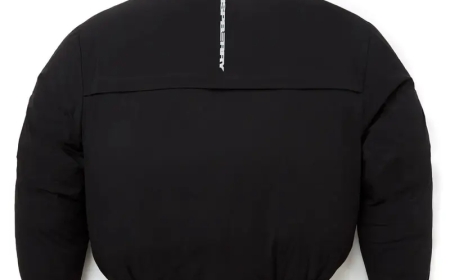Stump Grinding: The Simple Guide to Getting Rid of Tree Stumps
Stump grinding is one of the most effective ways to restore the beauty and safety of your yard after tree removal. It's cleaner, quicker, and more affordable than full removal.

Trees gone but the stump is still sitting there like an unwanted guest. Thats where stump grinding comes in. Its the fastest, cleanest, and most efficient way to reclaim your yard space without tearing up your entire lawn. Whether youve recently had a tree removed or inherited a stubborn stump, this guide covers everything you need to know.
What is Stump Grinding?
Definition and Purpose
Stump grinding is the process of using a specialized machine (a stump grinder) to shred a tree stump down below ground level. It doesnt remove the entire root system but grinds the visible portion into mulch.
How It Differs From Stump Removal
While stump grinding gets rid of the stump itself, stump removal means digging out the entire root ball which can be the size of a small car! Grinding is quicker, less invasive, and more affordable.
Why Stump Grinding is Important
Aesthetic Appeal
Lets be honest tree stumps arent exactly pretty. They make your yard look unfinished and can ruin the overall look of your landscaping.
Preventing Pests and Infestations
Old stumps attract unwanted visitors like termites, carpenter ants, fungi, and even snakes. Grinding the stump helps keep your yard pest-free.
Avoiding Regrowth
Some trees are stubborn even after being cut down, the roots can sprout new shoots. Grinding disrupts the root system and discourages regrowth.
Improving Landscape Usability
Stumps are a trip hazard and a lawnmowers worst nightmare. Removing them opens up space for gardens, patios, or even a fresh patch of grass.
The Stump Grinding Process
Preparation and Inspection
A pro will first inspect the area for obstacles like rocks, roots, or underground utilities. Safety always comes first.
Using a Stump Grinder
How It Works
The grinder has a spinning blade with sharp teeth that chips away at the wood. Its powerful enough to turn even the thickest stump into wood chips.
Different Grinder Sizes
-
Handheld: Best for small, shallow stumps
-
Walk-behind: Common for average residential use
-
Tow-behind or Tracked: Used for large or multiple stumps
Depth and Coverage
Typically, stumps are ground down 4 to 6 inches below the surface. Deeper grinding is possible for replanting or construction prep.
Cleanup and Mulching
The resulting wood chips can be left to mulch the area, removed, or spread in your garden. Many people love the free mulch!
Stump Grinding vs. Stump Removal
Pros and Cons of Each Method
| Feature | Grinding | Removal |
|---|---|---|
| Speed | Fast | Time-consuming |
| Cost | Affordable | More expensive |
| Lawn Disruption | Minimal | Major digging involved |
| Root Removal | No | Yes |
Which One Should You Choose?
If you're just looking to clean up your yard and stop regrowth, grinding is your best bet. Go for full removal only if you're building or planting right where the tree was.
Equipment Used in Stump Grinding
Types of Stump Grinders
-
Handheld Grinders: Portable but limited power
-
Walk-behind Grinders: Best for homeowners
-
Tow-behind or Tracked: Used by pros for big jobs
Safety Gear and Tools
Youll need:
-
Heavy-duty gloves
-
Goggles or a face shield
-
Hearing protection
-
Steel-toed boots
Cost of Stump Grinding
Factors That Affect Price
-
Stump size: Bigger = pricier
-
Location: Hard-to-access areas may add costs
-
Quantity: Multiple stumps? You might get a discount
-
Root complexity: More roots = more time
Average Pricing Ranges
-
Small stump: $75$150
-
Medium stump: $150$300
-
Large stump: $300$600+
Always ask for a detailed quote.
DIY vs. Professional Stump Grinding
Can You Do It Yourself?
Sure but its not for the faint of heart. Rental grinders are heavy, loud, and require some skill.
Risks of DIY Stump Grinding
-
Flying debris can cause injury
-
Underground pipes or wires may get damaged
-
Inexperience could make things worse
Benefits of Hiring a Pro
Professionals are faster, safer, and clean up after themselves. Plus, theyre insured in case anything goes wrong.
Aftercare and Landscape Restoration
What to Do With the Mulch
You can:
-
Leave it to decompose
-
Use it in your garden
-
Haul it away for composting
Replanting Grass or Trees
Wait a few weeks for the mulch to settle. Then, you can reseed grass or even plant a new tree (just not in the exact same spot if the roots are still deep).
Leveling and Soil Health
Add topsoil if needed and water thoroughly. This helps promote healthy regrowth of grass or plants.
Common Mistakes in Stump Grinding
Grinding Too Shallow
Too shallow and youll still have root sprouts or tripping hazards. Go at least 46 inches deep.
Not Checking for Underground Utilities
Always call before you dig or grind. You dont want to hit a gas or water line.
Ignoring Tree Roots
Large trees have sprawling root systems. If you leave too much, shoots might grow back.
Conclusion
Stump grinding is one of the most effective ways to restore the beauty and safety of your yard after tree removal. It's cleaner, quicker, and more affordable than full removal especially when handled by a pro. If youre dealing with an old stump thats in the way, nows the time to say goodbye to it for good.
FAQs
1. How deep should you grind a stump?
Typically, 46 inches below the surface is enough. For planting or construction, you may want deeper.
2. Will the tree grow back after stump grinding?
Not likely. Grinding disrupts the roots, but some stubborn trees might send up shoots if the roots are deep and healthy.
3. Is stump grinding safe for pets and kids?
Yes once the job is done and the area is cleaned up. During grinding, its best to keep everyone indoors.
4. How long does it take to grind a stump?
Most stumps take 1560 minutes depending on size and hardness.
5. Can I plant in the same spot after stump grinding?
You can, but it's better to shift slightly to avoid residual roots and decaying wood.





























